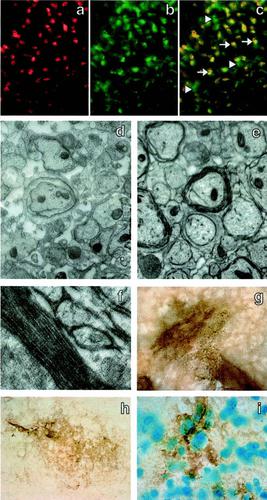Human Cell ( IF 4.3 ) Pub Date : 2023-11-21 , DOI: 10.1007/s13577-023-01006-1 Maria Veatriki Christodoulou 1 , Ermioni Petkou 1 , Natalia Atzemoglou 1 , Eleni Gkorla 1 , Aikaterini Karamitrou 1 , Yannis V Simos 1 , Stefanos Bellos 1 , Chryssa Bekiari 2 , Panos Kouklis 3 , Spyridon Konitsiotis 4 , Patra Vezyraki 1 , Dimitrios Peschos 1 , Konstantinos I Tsamis 1, 4

|
Multiple sclerosis (MS) is a chronic inflammatory, autoimmune, and neurodegenerative disease of the central nervous system (CNS), characterized by demyelination and axonal loss. It is induced by attack of autoreactive lymphocytes on the myelin sheath and endogenous remyelination failure, eventually leading to accumulation of neurological disability. Disease-modifying agents can successfully address inflammatory relapses, but have low efficacy in progressive forms of MS, and cannot stop the progressive neurodegenerative process. Thus, the stem cell replacement therapy approach, which aims to overcome CNS cell loss and remyelination failure, is considered a promising alternative treatment. Although the mechanisms behind the beneficial effects of stem cell transplantation are not yet fully understood, neurotrophic support, immunomodulation, and cell replacement appear to play an important role, leading to a multifaceted fight against the pathology of the disease. The present systematic review is focusing on the efficacy of stem cells to migrate at the lesion sites of the CNS and develop functional oligodendrocytes remyelinating axons. While most studies confirm the improvement of neurological deficits after the administration of different stem cell types, many critical issues need to be clarified before they can be efficiently introduced into clinical practice.
中文翻译:

多发性硬化症中干细胞的细胞替代疗法的系统评价
多发性硬化症 (MS) 是一种中枢神经系统 (CNS) 的慢性炎症、自身免疫性和神经退行性疾病,其特征是脱髓鞘和轴突丢失。它是由自身反应性淋巴细胞攻击髓鞘和内源性髓鞘再生失败引起的,最终导致神经功能障碍的累积。疾病缓解剂可以成功地解决炎症复发问题,但对进行性多发性硬化症的疗效较低,并且不能阻止进行性神经退行性过程。因此,旨在克服中枢神经系统细胞丢失和髓鞘再生失败的干细胞替代疗法被认为是一种有前途的替代疗法。尽管干细胞移植的有益作用背后的机制尚未完全清楚,但神经营养支持、免疫调节和细胞替代似乎发挥着重要作用,从而从多方面对抗该疾病的病理学。本系统综述的重点是干细胞在中枢神经系统病变部位迁移和发育功能性少突胶质细胞髓鞘再生轴突的功效。虽然大多数研究证实施用不同类型的干细胞后神经功能缺陷得到改善,但在有效地将其引入临床实践之前,需要澄清许多关键问题。



























 京公网安备 11010802027423号
京公网安备 11010802027423号